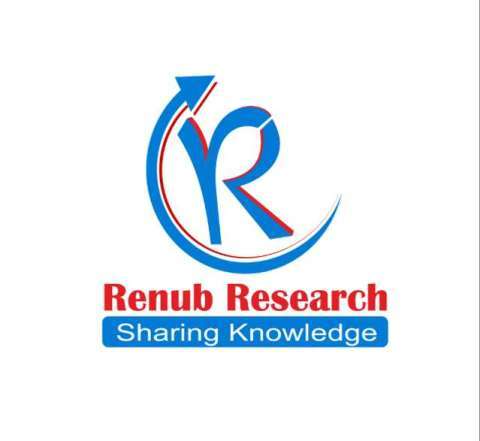The recent years have exploded environment friendly alternatives globally. Preferably, biodegradable plastics are one set of materials that have become a popular replacement for conventional plastics as consumers demand green options to align with the environment. Biodegradable plastic degrades under biological (mainly microbial) action with a bleak chance of hampering the natural environment. Moreover, the awareness of conventional plastic's harmful impact on the environment has also supported the global market for biodegradable plastics. According to the report by Renub Research, Global Biodegradable Plastics Market is expected to reach US$ 7.1 Billion by 2027.
COVID-19 Impact on Global Biodegradable Plastics Market:
Biodegradable plastics confirm to be an outstanding option to conventional plastics, which are in enhanced demand owing to the increase in food, pharma, and PPE packaging amidst the pandemic booming of the market strength globally. Remarkably, the need for food packaging and single-use plastic has increased in the COVID-19 pandemic. Companies have endeavoured biodegradable alternatives for food packaging and single-use cutlery, driving the market growth.
Request a Free Sample Copy of the Report: https://www.renub.com/request-sample-page.php?gturl=biodegradable-plastic-market-p.php
Worldwide Biodegradable Plastic Market Size was US$ 4.3 Billion in 2021
Numerous biodegradable and compostable plastics are bioplastics produced from plants rather than fossil fuels. There are many options, such as packaging, agriculture, and consumer goods depending on their application. Wherein biodegradable plastics can be split down by microbes, crushed up and converted into biomass, water and carbon dioxide (or in the nonexistence of oxygen, methane rather than CO2).
The positive impacts of biodegradable plastic are being regulated while society is transitioning towards a circular economy. Legislation is the most critical driver for biodegradable plastics globally. For example, bans or taxes on the use of non-biodegradable shopping bags in Italy, France, or coastal cities have led to a substantial surge in the consumption of biodegradable plastics.
By Application, Packaging is currently Gaining Traction in the Global Biodegradable Plastic Market:
By Applications, Packaging, Agriculture and Consumer Goods, Packaging is the chief use for biodegradable plastics. Wherein flexible packaging uses biodegradable plastics, large multinationals in the consumer-packaged goods, retailers, and foodservice sectors have also made progress or declared intentions to scale biodegradable plastic usage dramatically. Consequently, drive the demand for biodegradable packaging for fresh produce and food cutlery and compostable bags across the globe. In addition, several e-commerce giants have also prompted a switch to biodegradable packaging, encouraging the biodegradable demand in online goods and food delivery.
Similarly, agriculture also uses biodegradable plastics. The agricultural mulching film is used to improve crop yield in many countries. The traditional mulching film is difficult to collect from the field and can lead to severe plastic pollution in the soil. The biodegradable mulching film has, therefore, been tested and developed to be an alternative. Though its soil biodegradability and consequences are not fully understood, many countries have applied it to a larger scale.
Global Biodegradable Plastic Industry will grow with a CAGR of 8.72% during 2020-2027
Across the realms of the global biodegradable plastic market, by material type, Polybutylene adipate Terephthalate (PBAT), Polybutylene Succinate (PBS), Polylactic Acid (PLA), Polyhydroxyalkanoate (PHA), and Starch Blends are most renowned. Amongst the variants, starch blends emerge as the global leader in market share in the worldwide market.
Moreover, the commercial development of starch blends has gone through several phases. Starch blend being inexpensive and readily available compared to other natural polymers with additional biodegradability makes it a popular material to expand biodegradable plastics. Exceptionally, starch-bends are used in end-use industries such as packaging, automobiles, and agriculture.
On the other hand, PHA is majorly employed in medical applications such as drug encapsulation and medical implants. Other medical uses comprise tissue engineering, bone marrow scaffolds, and bone plates. Additionally, PHA is also used to produce compost bags, agriculture foil and films, packaging for food and beverages, and consumer goods, thereby feeding the growth of PHA globally.
The Future for Biodegradable Plastics:
Demand for biodegradable plastic has been rising due to environmental concerns regarding the use of non-renewable materials. As per our analysis, global market predictions are more ambitious, with an estimation of global biodegradable plastics demand reaching 2,066.99 Thousand Tonnes by 2027. The prevailing instances, like in China legislation relating to single-use plastic, are driving the need for biodegradable plastics. Moreover, according to Greenpeace China, has planned or constructed new biodegradable plastic projects with 36 companies.
By Region, Global Biodegradable Plastic Market has been segmented into North America, Europe, Asia Pacific, The Middle East and Africa and Latin America:
The North American market is a crucial hub as it is the leading region in the research & development and consumption of biodegradable plastic. Consumer goods are added vertical that shall fuel the market growth in North America owing to the raised living standards of the people, which prefer quality products instead of cheaper products.
Currently, Europe has the most extensive production capabilities and regional development. The robust automotive industry and the increasing demand for bio-plastic-based packaging products by various manufacturers in Europe expect to favour the market's demand. The expanding packaging industry in the region shall further bolster regional growth due to the expanding market for lightweight automobile parts and electronic goods.
In addition, the growth of the biodegradable plastics market in Asia-Pacific is attributed to the apparent availability of raw materials utilised to produce biodegradable plastics. However, the future development of biodegradable plastics in Asia-Pacific is highly attributable to the awareness about biodegradable plastics as a viable option to conventional plastics and price reduction.
Key Companies Insights:
The global competition among the players exists in the market due to many players present across the regions. Moreover, the demand for biodegradable plastic is poised to increase in both developed and developing economies. Hence, the key market players are spending in research and development to include biodegradable plastic products, which are strong and readily degradable in the natural environment. Major players in the industry include Total Corbion (Netherlands), Mitsubishi Chemical Holding Corporation (Japan), Toray Industries (Japan), Biome Bioplastics (UK) and GREEN DOT BIOPLASTICS.
Renub Research latest report “Biodegradable Plastic Market, Global Forecast By Material Type (Polybutylene adipate Terephthalate (PBAT), Polybutylene Succinate (PBS), Polylactic Acid (PLA), Polyhydroxyalkanoate (PHA), and Starch Blends), Applications (Packaging, Agriculture and Consumer Goods), Region (North America, Europe, Asia Pacific, The Middle East and Africa and Latin America), Companies (Total Corbion (Netherlands), Mitsubishi Chemical Holding Corporation (Japan), Toray Industries (Japan), Biome Bioplastics (UK) and GREEN DOT BIOPLASTICS)” provides a detailed analysis of Global Biodegradable Plastic Industry.
Follow the link for the full report with detailed TOC and list of figures and tables: https://www.renub.com/biodegradable-plastic-market-p.php
Material Type – Global Biodegradable Plastic Market & Volume have been covered from 6 viewpoints:
1. Polybutylene adipate Terephthalate (PBAT)
2. Polybutylene Succinate (PBS)
3. Polylactic Acid (PLA)
4. Polyhydroxyalkanoate (PHA)
5. Starch Blends
6. Others
Applications – Global Biodegradable Plastic Market have been covered from 4 viewpoints:
1. Packaging
2. Agriculture
3. Consumer Goods
4. Others
Regions – Global Biodegradable Plastic Market have been covered from all the 5 regions:
1. North America
2. Europe
3. Asia Pacific
4. The Middle East & Africa
5. Latin America
Company Insights:
• Overview
• Recent Developments
• Sales Analysis
Companies Covered:
1. Total Corbion (Netherlands)
2. Mitsubishi Chemical Holding Corporation (Japan)
3. Toray Industries (Japan)
4. Biome Bioplastics (UK)
5. GREEN DOT BIOPLASTICS
About the Company:
Renub Research is a Market Research and Consulting Company. We have more than 10 years of experience especially in international Business-to-Business Researches, Surveys and Consulting. We provide a wide range of business research solutions that helps companies in making better business decisions. We partner with clients in all sectors and regions to identify their highest-value opportunities, address their most critical challenges, and transform their businesses. Our wide clientele comprises major players in Healthcare, Travel and Tourism, Food & Beverages, Power & Energy, Information Technology, Telecom & Internet, Chemical, Logistics & Automotive, Consumer Goods & Retail, Building, and Construction, & Agriculture. Our core team is comprised of experienced people holding graduate, postgraduate, and Ph.D. degrees in Finance, Marketing, Human Resource, Bio-Technology, Medicine, Information Technology, Environmental Science, and many more. Our research helps to make business decisions: on strategy, organization, operations, technology, mergers & acquisitions etc. We support many blue chip companies by providing them with findings and perspectives across a wide range of markets. Our research reports offer a blend of information insight, analysis, and forecasting that is essential in today's ultra-competitive markets.
Contact Us:
Renub Research
Phone No: +1 678-302-0700 (USA) | +91–120–421–9822 (IND)
Email: info@renub.com
Web: https://www.renub.com
Follow on Linkedin: https://www.linkedin.com/company/renub-research
Follow on Twitter: @renubresearch


